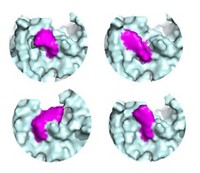Advertisement
Grab your lab coat. Let's get started
Welcome!
Welcome!
Create an account below to get 6 C&EN articles per month, receive newsletters and more - all free.
It seems this is your first time logging in online. Please enter the following information to continue.
As an ACS member you automatically get access to this site. All we need is few more details to create your reading experience.
Not you? Sign in with a different account.
Not you? Sign in with a different account.
ERROR 1
ERROR 1
ERROR 2
ERROR 2
ERROR 2
ERROR 2
ERROR 2
Password and Confirm password must match.
If you have an ACS member number, please enter it here so we can link this account to your membership. (optional)
ERROR 2
ACS values your privacy. By submitting your information, you are gaining access to C&EN and subscribing to our weekly newsletter. We use the information you provide to make your reading experience better, and we will never sell your data to third party members.
Start-ups
Avilar Therapeutics launches with $60 million to degrade extracellular targets
The startup is designing bifunctional molecules that will hijack the endolysosome’s ability to break down extracellular proteins
by Asher Mullard, special to C&EN
November 18, 2021
| A version of this story appeared in
Volume 99, Issue 42

Avilar Therapeutics is joining the growing targeted degrader crowd. But whereas most companies in that area are advancing small molecules that break down intracellular proteins, Avilar is only the second to publicly take on extracellular troublemakers.
The Waltham, Massachusetts-based startup is formally launching with $60 million in seed financing from RA Capital Management, a life science–focused investment firm, to build on the concept of bifunctional degraders. These small molecules typically have two “arms” with different chemical functionality: one to bind a target of interest and another to bind a protein called an E3 ligase. The E3 ligase tags the target for degradation by a cellular trash disposal system called the proteasome.
Around a dozen bifunctional degraders are in or about to enter the clinic, with three from Arvinas Therapeutics alone. But these degraders can only take on proteins that are located inside cells, leaving out of reach the thousands of proteins that are on or outside cells.
“We see a very large scale of opportunity here, with many potential targets,” says Avilar CEO Dan Grau. “There are so many targets that are either poorly served by existing modalities, or frankly in some cases, not served at all.”
RA Capital started exploring this extracellular opportunity in 2019. The degrader strategy its team landed on also relies on two-armed molecules, but it harnesses a different cellular disposal system, called the endolysosome, to do the degradative dirty work. One arm again binds a therapeutic target; the other binds to a cell surface receptor called an asialoglycoprotein receptor (ASGPR). ASGPR then drags the tethered extracellular protein into an intracellular endolysosome for disposal.
ASGPRs typically bind complex sugars, including galactose and its derivative N-acetylgalactosamine (GalNAc). While Avilar was in stealth mode, one of its priorities was the design of better ASGPR-binding small molecules. “The team identified opportunities to not just harness this pathway, but to improve upon nature itself,” Grau says.
Avilar’s chemists then link the potent ASGPR binder to an appropriate bait—be it a small molecule, a peptide, or an antibody—to best catch their protein target. “We’re relatively agnostic in terms of the modality for those baits,” Grau says.
Others are taking a similar approach. At least three academic groups have independently published on ASGPR-based degraders this year. Stanford University chemist and glycoscience evangelist Carolyn Bertozzi led one of these teams. Bertozzi founded Lycia Therapeutics in 2019, kick-starting the extracellular degrader field.
Bertozzi’s seminal work in this space showcased how another receptor, the cation-independent mannose-6-phosphate receptor (CI-M6PR), could be used to hijack the endolysosomal recycling machinery. Lycia is exploring the different opportunities that CI-M6PR, ASGPR, and other receptors offer.
The different receptors may serve different needs. Whereas nearly all cells express CI-M6PR, only liver cells express ASGPR. ASGPR-based degraders could therefore provide a liver-specific option, with lower risk of side effects from degradation in other tissues. Because the liver filters blood, these candidates could be used to degrade secreted circulating proteins and proteins on the surface of liver cells.
Avilar has not yet disclosed which targets or diseases it is working on. “But the space is large,” Grau says, spanning hundreds of extracellular proteins.
“It wouldn’t surprise me if others begin to move in, just because of the scale of the opportunity. There’s enough room for a few companies in this very, very large space,” he adds.




Join the conversation
Contact the reporter
Submit a Letter to the Editor for publication
Engage with us on Twitter